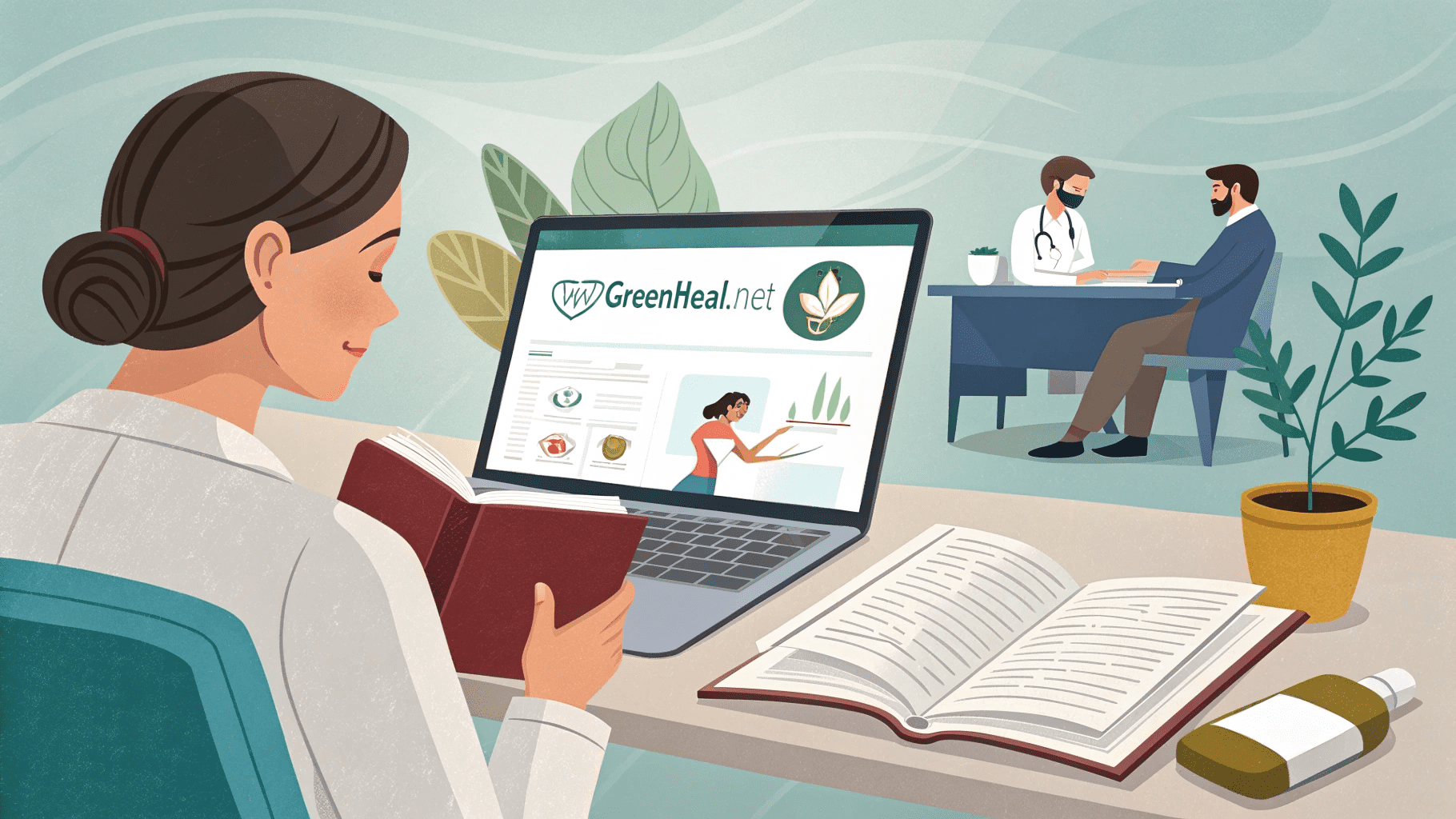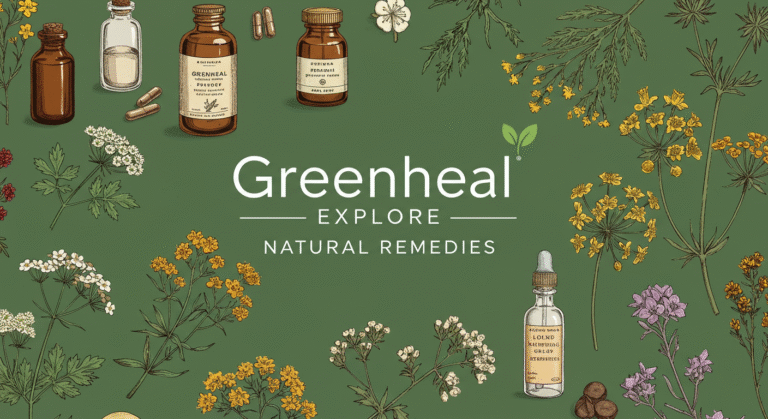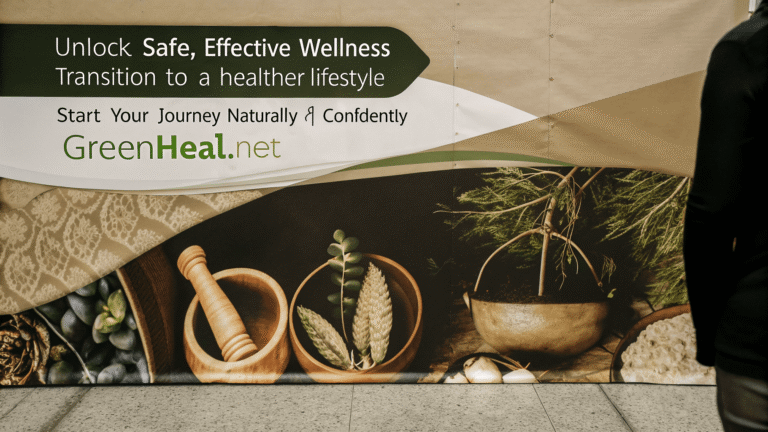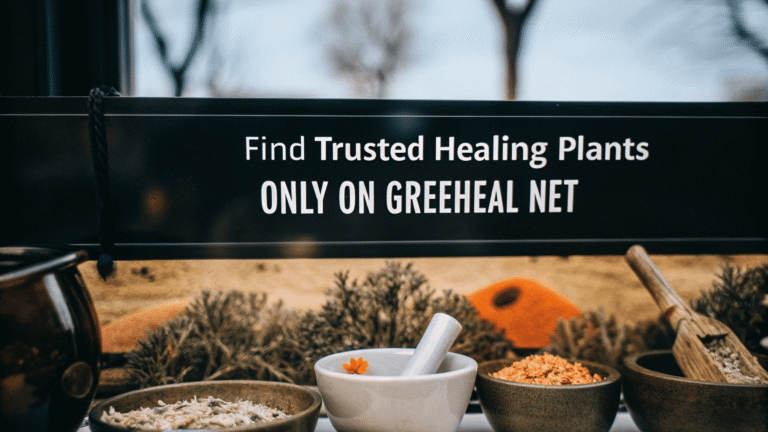How to Safely Browse Natural Remedies on www.greenheal.net
How to safely browse natural remedies on www.greenheal.net is essential knowledge for anyone exploring herbal treatments online. As interest in holistic health continues to grow, GreenHeal has emerged as a trusted source for natural remedy information. However, not all content on the internet is equally reliable. Some articles may lack scientific backing or omit important safety details. That’s why it’s crucial to approach such sites with a critical eye—checking sources, understanding ingredients, and being mindful of personal health needs. By learning how to browse GreenHeal safely, users can enjoy the benefits of natural healing without falling victim to misinformation or risky advice.
Overview of GreenHeal’s Content & Structure
GreenHeal.net functions primarily as an educational blog that focuses on natural and herbal remedies. The site features categories like neuropathy, strep throat, menstrual cramps, and more. Each article is usually written in simple, user-friendly language to help the average reader understand natural health options. The platform does not sell products or include complex medical jargon, making it approachable for those new to holistic wellness.
The website structure relies heavily on archives and tag-based navigation, with limited filtering options. Some articles are updated regularly, while others may remain outdated for years. Because of this, it’s essential for users to pay attention to article dates and the depth of information provided. While browsing, consider how the site organizes content, and focus on categories that seem well-developed or better sourced. Knowing how to move around GreenHeal is key to finding useful, accurate, and up-to-date content.
Top Competitors in Natural Remedies Space
To understand GreenHeal’s reliability, it’s useful to look at other leading sites in the natural remedy field. Websites like iHerb.com, Mercola.com, and FunctionHealth.com are well-established and known for transparency and product quality. These competitors often feature licensed contributors, peer-reviewed studies, or even FDA disclaimers, which offer users more confidence when making health decisions. Their interfaces are also optimized for user experience and research clarity.
Compared to them, GreenHeal focuses more on educational content rather than commerce. While that makes it more approachable, it also means it lacks verification systems like customer reviews or scientific evidence. Unlike iHerb, GreenHeal doesn’t sell products or provide detailed sourcing. That puts the responsibility on users to double-check claims and take extra precautions. Evaluating GreenHeal against its competitors highlights the strengths and weaknesses you should consider while browsing.
What Sets GreenHeal Apart from Bigger Sites
One major difference between GreenHeal and its competitors is its community-oriented, blog-style approach. It isn’t a commercial site that pushes products, which can create a sense of unbiased guidance. For many users, this feels more authentic and less sales-driven. It emphasizes natural wellness education, with a focus on home remedies and Eastern techniques that appeal to a wide audience.
However, GreenHeal’s casual format can also mean limited oversight or expert verification. Many articles are published under general bylines, and few list medical references. This sets it apart from platforms that require contributors to have medical backgrounds. Readers must recognize that while GreenHeal feels accessible, it demands more careful reading and responsible interpretation. The absence of marketing doesn’t automatically mean neutrality or accuracy—it means users must be diligent about what they apply.
Evaluating Author Credentials & Article Sources
A smart way to ensure safety on GreenHeal is to evaluate the credibility of the content creators. Unfortunately, many of the articles are posted under vague author names or even anonymously. Unlike medical websites where each post is backed by a certified expert, GreenHeal often omits detailed author qualifications. This can make it difficult to judge the reliability of the information shared.
To stay safe, users should prefer articles that include citations from journals, health organizations, or educational institutions. If no source is mentioned, treat the content as introductory rather than definitive. Double-check health claims by researching the topic further on reputable medical websites. When author credentials are missing, it’s best to treat GreenHeal as an inspiration or general guide rather than a clinical reference.
How to Spot Scientifically Grounded Advice
Scientific content usually includes references to clinical trials, data, or publications from credible health organizations. When browsing GreenHeal, look for articles that mention dosage amounts, documented effects, or comparisons to medical treatments. While not every helpful article needs to be technical, it should still give a sense of legitimacy and balance.
If a remedy sounds too good to be true, it probably is. Pay attention to vague language like “miracle cure” or “instant relief,” which often signals unsupported claims. Articles with no listed risks or side effects should raise a red flag. For a remedy to be safe, it should be presented with evidence, even if minimal. Users who look for science-based clues are better equipped to avoid misleading or exaggerated content.
Navigating Categories Safely: Neuropathy, Cramps, Throat Remedies
GreenHeal organizes its articles into condition-specific categories like neuropathy, cramps, and throat issues. These categories make it easier for users to find tailored remedies. However, not every section is equally researched or balanced. Some may offer detailed insights, while others rely more on anecdotal or traditional advice. Users must approach each category with an open but careful mindset.
It’s best to compare what you read with other medical sources. For instance, if GreenHeal suggests a natural remedy for nerve pain, verify it with Mayo Clinic or WebMD. The more critical you are of the category content, the better choices you’ll make. Treat these sections as starting points for research—not final medical conclusions. Being cautious ensures that you gain insights without adopting risky or unverified suggestions.
Checking Ingredient Lists & Potential Interactions
Many people assume that “natural” means “safe,” but that’s not always true. Herbal remedies can have strong biological effects, interact with medications, or cause allergic reactions. GreenHeal articles often mention herbs or mixtures without always warning about side effects. That’s why users must independently check what ingredients are included and understand their implications.
If you’re taking medications or have health conditions, some herbs might cause problems. For example, St. John’s Wort can interfere with antidepressants, and certain teas may impact blood pressure. Always look up each ingredient mentioned, and consult with your doctor if unsure. Browsing safely means reading beyond the remedy and understanding its possible effects on your body.
Using Internal Search & Filters Effectively
GreenHeal offers a simple internal search bar that helps users find specific content. To make the most of it, try searching precise terms like “natural treatment for sinus pain” instead of broad keywords like “herbs.” This narrows down results and leads to more relevant and useful articles. Browsing by tags or categories also helps focus your search.
Though it lacks advanced filters like larger platforms, using the available tools correctly can save time and reduce confusion. Always sort by date when possible, so you avoid outdated advice. Make sure to cross-check newer content for updates or corrections. Effective use of search tools makes browsing safer, smarter, and more focused on your health needs.
Cross-Verifying Remedies with External Sources
No matter how promising a GreenHeal remedy looks, it’s important to confirm it using trusted health websites. Cross-referencing builds confidence and helps prevent mistakes. You can verify suggestions through NIH.gov, WebMD, or MayoClinic.org. These sites often provide clinical research or expert opinions that can support—or contradict—what GreenHeal offers.
If an article lacks citations or sounds too anecdotal, make it a point to dig deeper. Don’t rely on GreenHeal as your only source. It’s a helpful starting point, not a final authority. When users treat GreenHeal like a supplement to more rigorous sites, they get the best of both worlds—accessible language and medically validated insight.
Avoiding Outdated or Anecdotal Suggestions
GreenHeal’s content library includes articles from different years, and some may no longer align with the latest health research. Outdated information can mislead readers into trying remedies that are no longer considered effective or safe. Always check the date of publication at the top or bottom of the article. More recent posts are more likely to reflect updated health practices and scientific knowledge.
Additionally, many articles on GreenHeal are based on personal experiences or traditional stories. While these can be inspiring, they don’t substitute for clinical evidence. Readers should treat anecdotal content as informal advice, not guaranteed solutions. Look for articles that mention studies, dosage guidelines, or known effects. By avoiding older or purely anecdotal suggestions, users protect themselves from relying on potentially unsafe or ineffective remedies.
How to Contact GreenHeal for Clarifications or Updates
If you come across an article on GreenHeal that raises questions or feels incomplete, the best approach is to reach out directly. Most websites include a “Contact Us” page, an email address, or a feedback form. Communicating with site admins shows you care about accurate health information. It also gives them a chance to correct or clarify the content for future readers.
Sometimes, comment sections under articles allow users to ask questions or request additional information. If this is available, use it to seek answers. While GreenHeal may not respond instantly, reaching out encourages transparency and user interaction. A website that welcomes questions and suggestions is more likely to maintain content quality. Taking the step to clarify information is part of responsible and safe browsing on any health platform.
Privacy & Security Tips When Browsing Health Sites
Browsing health-related websites can involve sensitive data. Even if you’re just reading articles, you may share details in search bars or comment sections. That’s why it’s important to ensure you’re using a secure connection—check that the URL begins with “https.” Avoid entering private medical details unless the site guarantees security and confidentiality.
Also, refrain from downloading files or clicking unknown links unless you trust the site fully. Use private or incognito mode if you’re researching personal health topics and don’t want your browser to save the data. While GreenHeal doesn’t collect medical records, it’s good practice to remain cautious on any site. Protecting your privacy is just as crucial as protecting your physical health during online research.
GreenHeal vs Competitor Platforms: Trust & Transparency Comparison
Compared to larger platforms like iHerb or Mercola, GreenHeal is much simpler and non-commercial. It doesn’t sell products or feature advertising pressure, which many users appreciate. This educational focus can build trust, especially among readers who want information without being sold something. It feels more like a blog from wellness enthusiasts than a corporate machine.
However, transparency is limited—author details, medical credentials, and source citations are often missing. Larger platforms usually provide these, making it easier for readers to assess credibility. Understanding these differences is key to knowing how much weight to give GreenHeal’s content. It’s best to combine GreenHeal’s approachable advice with the verified insights of competitor platforms for a fuller, safer health strategy.
Final Checklist: Safe Browsing Practices on GreenHeal
To safely navigate www.greenheal.net, keep a mental checklist ready. First, check the publication date to avoid outdated advice. Then, scan for citations or external references that back up the remedy. If a post lacks these, treat it with caution. Also, be wary of miracle claims or one-size-fits-all advice that doesn’t consider health differences.
Second, cross-check suggestions with trusted sources like WebMD or Mayo Clinic. Don’t ignore ingredient risks—always research them individually. Use private browsing for health-related searches and avoid posting personal details. Most importantly, consult a healthcare provider before starting any new remedy. This checklist will help you stay safe while exploring the world of natural healing on GreenHeal.
FAQ’s About How to Safely Browse Natural Remedies on www.greenheal.net
Is www.greenheal.net a reliable source for natural remedies?
GreenHeal provides accessible information on herbal and natural treatments, but it does not always cite medical sources. While many articles are informative, users should cross-check advice with trusted platforms like WebMD or Mayo Clinic and consult a healthcare professional before trying any remedy.
How can I verify the safety of a remedy on GreenHeal?
Look for articles that reference scientific studies or known health organizations. If no sources are listed, research the ingredients independently using reputable medical websites. Avoid remedies that lack dosage information or list no potential side effects.
Are there risks in following natural remedy advice from GreenHeal?
Yes. Some herbs may cause allergic reactions, interact with medications, or worsen certain conditions. Always read carefully and seek professional advice before trying any new supplement or treatment suggested online.
Does GreenHeal collect personal health data from users?
GreenHeal is an informational site and doesn’t typically require personal health data. However, users should avoid sharing sensitive details in comment sections and ensure they’re browsing securely via HTTPS.
Can I contact GreenHeal for clarification on an article?
Yes. If you have questions or concerns about specific content, you can use the site’s contact form or feedback option. Reaching out can help ensure clarity and may prompt updates or improvements to the information provided.
Conclusion
Understanding how to safely browse natural remedies on www.greenheal.net is essential for making informed wellness choices. While GreenHeal offers helpful insights into herbal treatments, users must take care to verify sources, check for scientific backing, and remain aware of potential risks or interactions. Relying solely on anecdotal advice can lead to unsafe outcomes, so it’s best to treat GreenHeal as a starting point, not a final authority. By combining its guidance with trusted medical resources and consulting healthcare professionals when needed, users can explore natural remedies confidently while ensuring their safety and well-being remain the top priority.
Similar Post:







